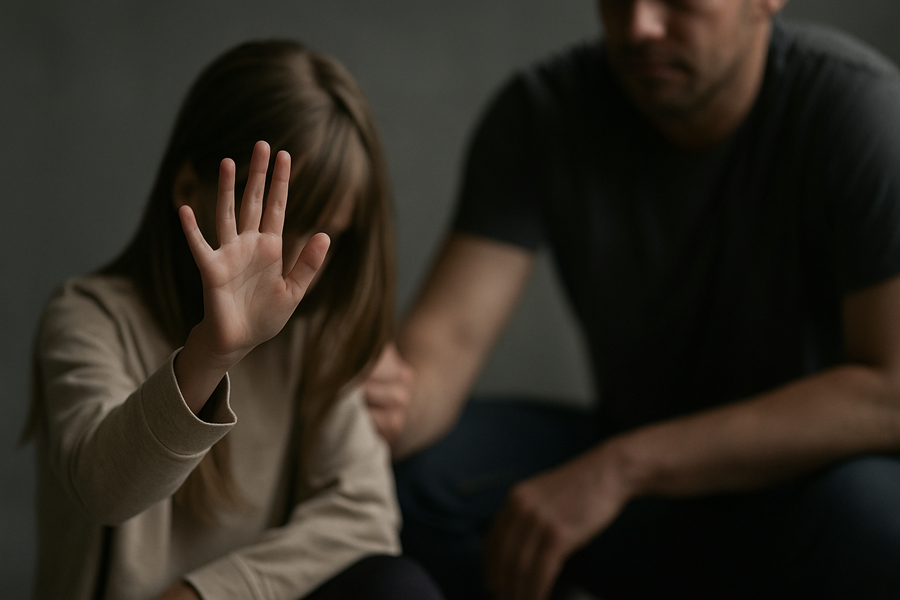Sexual exploitation in the UK: Definition, signs, and legal consequences

Are you concerned someone may be experiencing sexual exploitation abuse? Whether you’re a parent noticing troubling changes, a professional with safeguarding duties, or someone seeking justice after harm, grasping the sexual exploitation definition becomes paramount when answers matter most. This authoritative guide clarifies sexual exploitation child protections under UK law, identifies key sexual exploitation signs, examines current sexual exploitation statistics, and outlines decisive legal pathways to justice and compensation. Contact a specialist sexual exploitation lawyer promptly for confidential, expert legal support.

KEY TAKEAWAY: What makes sexual exploitation child cases legally unique?
Recognise sexual exploitation signs, and access specialist sexual exploitation lawyer support.
Legal framework and sexual exploitation definition
UK law establishes precise parameters for sexual exploitation through comprehensive statutory provisions designed to protect victims and prosecute offenders effectively. The Sexual Offences Act 2003 forms the cornerstone of these protections:
- Sexual exploitation definition: The sexual exploitation meaning encompasses situations where individuals are coerced, manipulated, deceived, or induced into sexual activity through abuse of power, vulnerability, or trust, including arrangements for financial or other advantage (Sexual Offences Act 2003 ss.47-50).
- Statutory thresholds: Children under 18 cannot legally consent to commercial sexual activity; consent becomes irrelevant where grooming, coercive control, or positions of trust exist; strict liability applies for offences against children under 13 (SOA 2003 ss.5-8, 47-50).
- Sexual exploitation child protections: The Sexual Offences Act 2003 criminalises paying for sexual services (s.47), causing or inciting child sexual exploitation (s.48), controlling such arrangements (s.49), and facilitating exploitation (s.50).
- Enhanced safeguards for vulnerable groups: Looked-after children receive additional protections through statutory duties under the Children Act 1989; children with learning disabilities benefit from extended abuse of trust provisions; care workers and educational staff face heightened responsibilities and criminal sanctions.
- Commercial vs non-commercial distinction: Commercial exploitation involves payment, goods, accommodation, or other benefits for sexual services; non-commercial exploitation includes grooming gangs, online abuse, and coercive relationships without direct financial exchange.
- Enforcement mechanisms: Courts may impose Sexual Harm Prevention Orders, notification requirements, and extraterritorial prosecutions; the Modern Slavery Act 2015 addresses trafficking for sexual exploitation; multi-agency safeguarding protocols ensure coordinated responses to sexual exploitation signs.
Sexual exploitation abuse forms and signs
Recognition of sexual exploitation signs requires systematic assessment across behavioural, physical, environmental, and digital domains:
- Diverse manifestations: Online grooming through social media, gaming, and messaging platforms using gifts and manipulation; county lines operations combining drug trafficking with sexual exploitation through debt bondage; trafficking networks using deception, force, and vulnerability exploitation; commercial sexual exploitation through organised crime managing multi-location operations.
- Behavioural sexual exploitation signs: Unexplained gifts, money, or expensive items; secretive phone/online behaviour; sudden personality changes including withdrawal from family and activities; school truancy and declining performance; evidence of substance abuse or age-inappropriate sexual knowledge; self-harm, depression, or rapid-onset anxiety disorders.
- Physical and health indicators: Unexplained injuries, particularly genital areas; sexually transmitted infections or pregnancy in minors; signs of drug administration or poor hygiene; frequent overnight absences; malnutrition or inadequate care; bruising consistent with physical control.
- Environmental and digital factors: Association with significantly older unknown adults; presence in hotels or unfamiliar locations; possession of multiple phones or secret social media accounts; evidence of travel or suspicious financial transactions; excessive online secrecy or intimate image sharing; contact patterns suggesting grooming.
- Coercive control recognition: Debt bondage through fabricated expenses; threats against family for compliance; documentation control of passports/identification; psychological manipulation creating dependency; isolation from support networks; scripted communication indicating external control.
- Multi-agency protocols: Immediate Multi-Agency Safeguarding Hub (MASH) referral; National Referral Mechanism (NRM) for trafficking cases; CEOP reports for online offences; Achieving Best Evidence interviews with specialist officers; CSE risk assessment tools deployment; coordinated police, social services, education, and health responses.
Scale, sexual exploitation statistics, and historic context
Sexual exploitation statistics reveal extensive abuse across England and Wales, though official figures significantly underestimate true prevalence due to systematic under-reporting:
- National sexual exploitation statistics: Approximately 15,000 children identified at risk of sexual exploitation child abuse annually; police recorded 73,260 sexual offences against children in 2022-23; National Crime Agency estimates 300,000 individuals pose online sexual threat; NSPCC research indicates only 15% of child sexual abuse reaches authorities.
- Regional variations and reporting: Greater Manchester, West Yorkshire, and South Yorkshire show highest recorded rates; rural areas demonstrate lower reporting despite similar prevalence; late disclosure common with offences surfacing years after exploitation.
- Hidden victims and under-reporting: Male victims comprise 25% of cases but only 8% of reports; looked-after children experience 6 times higher exploitation rates; children with learning disabilities, ethnic minority communities, and LGBTQ+ youth face distinct barriers including cultural stigma and authority mistrust.
- Rotherham child sexual exploitation scandal: Jay Report (2014) identified minimum 1,400 children exploited between 1997-2013; systematic failures including ignored reports and misplaced cultural sensitivity concerns; complete leadership restructuring of South Yorkshire Police and Rotherham Council.
- Grooming gang prosecutions: Operation Stovewood secured 35+ Rotherham convictions; Rochdale, Telford, Newcastle, Oxford, and Huddersfield operations revealed organised networks and consistent multi-agency coordination failures; misinterpreted cultural sensitivity repeatedly hindered intervention.
- Reform responses: Independent Inquiry into Child Sexual Abuse (IICSA) produced 20 investigation reports; mandatory CSE training implemented; Working Together guidance updated emphasising information sharing; Regional Organised Crime Units established; strengthened survivor-led practice
Legal consequences, penalties, and civil remedies
UK courts impose severe sanctions for sexual exploitation abuse, combining criminal penalties with long-term monitoring and comprehensive compensation pathways for victims.
- Sentencing and charging: Sexual exploitation child offences (SOA 2003 ss.47-50) carry maximum 14 years imprisonment; Modern Slavery Act 2015 trafficking reaches life imprisonment; aggravating factors include victim vulnerability, grooming duration, and commercial gain; multiple victim cases result in consecutive sentences.
- Sexual harm prevention orders and monitoring: SHPOs impose internet restrictions, contact prohibitions, and geographical limitations for 5 years to indefinite periods; mandatory sex offender register placement for 10 years to life; polygraph testing conditions; breaches constitute separate 5-year maximum offences.
- CICA compensation claims: Criminal Injuries Compensation Authority awards £1,000-£500,000+ for sexual exploitation abuse without requiring perpetrator conviction; 2-year application deadline with discretionary extensions for childhood abuse cases.
- Civil litigation pathways: Unlimited damages available against perpetrators, institutions, and local authorities; no win, no fee arrangements available; limitation periods extended for childhood abuse enabling adult claims; group litigation possible for institutional failures.
- Ancillary orders and protection: Restraining orders prevent victim contact indefinitely; confiscation orders recover criminal proceeds; DBS barring prevents working with children; special measures protect vulnerable witnesses; reporting restrictions preserve victim anonymity.
Do I need a sexual exploitation solicitor?
Specialist sexual exploitation lawyer representation is essential given complex legal frameworks, trauma-informed evidence requirements, and multi-faceted compensation pathways.
- Trauma-informed representation: ISVA coordination, special measures applications, child-friendly practice for sexual exploitation child cases, family support guidance.
- Evidence and compensation: Digital forensics, police/CPS liaison, CICA claims, civil litigation against perpetrators/institutions, expert witness
- Multi-agency coordination: MASH integration, social services/education/healthcare collaboration, court intermediary arrangements, therapeutic support coordination.
- Defence for false allegations: Due process protection, digital evidence analysis, expert psychological testimony, bail applications, abuse of process
- Reputation and media: Reporting restrictions, media injunctions, online content removal, crisis communications, reputational recovery coordination.
FAQs
Can I report sexual exploitation child abuse anonymously?
Yes, through CEOP online, Crimestoppers (0800 555 111), or local safeguarding teams.
What support services are available beyond legal representation?
ISVAs, NHS trauma counselling, and charities like NSPCC (0808 800 5000) provide specialist support.
Will reporting sexual exploitation abuse affect immigration status?
No, victims receive National Referral Mechanism protection and police cannot use reports for immigration enforcement.
Sexual exploitation abuse devastates lives, yet UK law provides robust tools to identify sexual exploitation signs, prosecute offenders, and secure comprehensive compensation. Understanding the sexual exploitation definition empowers victims, families, and professionals to take decisive action for justice and recovery.
Spot the signs, secure justice!
Qredible’s network connects you with vetted, SRA-regulated sexual exploitation lawyers specialising in trauma-informed representation.
KEY TAKEAWAYS:
- The sexual exploitation definition under UK law encompasses coercive sexual arrangements, with the Sexual Offences Act 2003 providing sexual exploitation child protections and penalties reaching 14 years imprisonment for offenders.
- Identifying sexual exploitation signs requires recognising behavioural changes, unexplained gifts, and digital indicators, while sexual exploitation statistics reveal only 15% of cases reach authorities despite widespread prevalence.
- Specialist sexual exploitation lawyer representation proves essential for navigating complex legal frameworks, securing CICA compensation, and coordinating multi-agency responses for optimal victim protection and recovery.
Articles Sources
- nspcc.org.uk - https://www.nspcc.org.uk/keeping-children-safe/types-of-abuse/child-sexual-exploitation/
- met.police.uk - https://www.met.police.uk/advice/advice-and-information/caa/child-abuse/child-sexual-exploitation/
- unhcr.org - https://www.unhcr.org/what-we-do/protect-human-rights/tackling-sexual-exploitation-abuse-and-harassment/defining-sexual
- sunderland.gov.uk - https://www.sunderland.gov.uk/article/12180/Sexual-exploitation
Do you need a solicitor?
Find a solicitor on Qredible in just a few easy steps




















